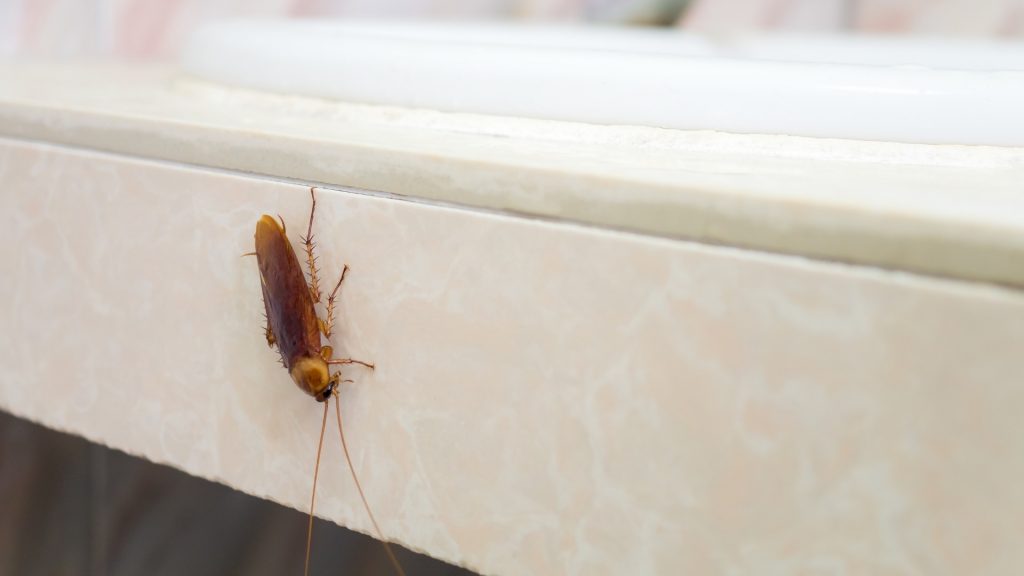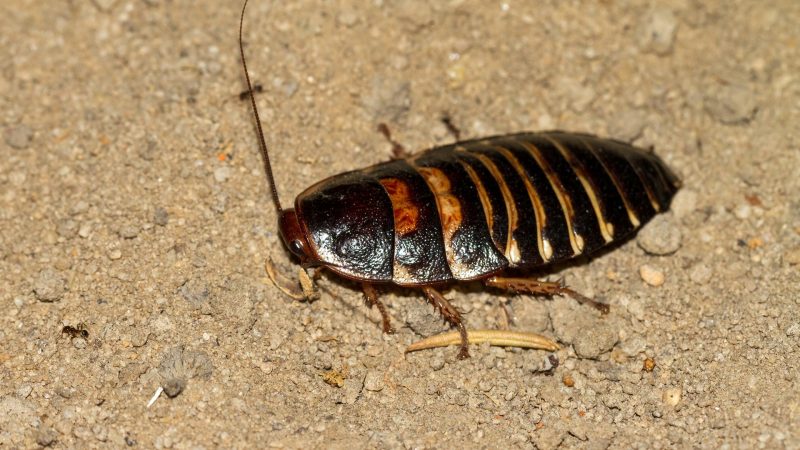The chances are high that you have seen a cockroach at least once in your life and that probably wasn’t a memorable moment, right? This is mainly because these creatures are not good-looking and most people are disgusted by them.
How many legs do cockroaches have? A cockroach has a flat, oval-shaped body, and a small head with six long spiny legs. A lot of cockroaches have wings that are flattened against their backs. German cockroaches are the most widespread roaches and are about half an inch long. However, some other types can grow up to 3.5 inches!
Can cockroaches regrow their legs? And if not, can they survive without a pair? Are the legs of roaches hairy? Do all of the types have 6 legs? Find out everything you need to know about the limbs of these creatures in the following sections below. Let’s begin!
Related: Can Cockroaches Fly? | Unsettling Facts (with Pictures!)
Can Cockroaches Regrow Legs?
Cockroaches can regrow their limbs (legs). Thankfully, these creatures can’t regrow their heads, so if the head is missing, the cockroach is gone for good. However, when it comes to legs, roaches can grow new ones.
Just like a lot of other invertebrates, these insects have the regeneration ability. The limb can be shed purposefully or lost as a result of an “attack”. A cockroach will need different time periods to regrow its limb in both of these cases. But the leg will certainly grow back and it will be just as strong as the previous one. It might have a different number of muscles or segments, but that doesn’t really affect the viability of the insect.
Cockroaches have large genomes. That is one of the reasons why these creatures are able to regenerate their limbs. Their body is able to remember how to regrow a certain body part. No one knows exactly how much time it will take a roach to regenerate its limbs. It depends on a few factors: the type of the roach, how the creature lost the limb, and how many legs did it lose.

By the way, the cockroach can purposefully get rid of its leg. They may shed its limb out of fear, for example, or if it will help them escape. The roach can also choose to get rid of an injured limb. Of course, in such a case, the roach is left with a small stump that will make the whole regeneration process a little faster.
It will take the insect around five weeks to regrow the first part of its leg. However, if the limb has been ripped off, then there is no stump. The regeneration process will take a lot more time and effort and the ripped-off limb will only grow to about 29% of its full size.
Can Cockroaches Survive Without a Pair of Legs?
A roach can continue living its normal life, in case it loses 1 or 2 legs. In fact, even if the insect has to say “good-bye” to more than 2 limbs, it will be able to survive. The only difference is that the whole recovery period will be a bit longer. By the way, the loss of limbs will not affect the cockroach’s overall life span at all. The roaches that have never lost a limb live as many months as the ones that have lost a few during their existence.
But if a cockroach lost a pair of legs, doesn’t it mean that the creature will bleed to death?
The truth is that roaches are incapable of doing that. These insects have an open circulatory system. The blood in the body of the cockroaches is not contained with the help of pressure. So, bleeding out to death is an impossible scenario for these creatures.
How Many Legs Does a Hissing Cockroach Have?

Madagascar hissing cockroaches also have six legs (three pairs that are attached to their thorax). So, a hissing cockroach has just as many legs as any other roach out there. The main difference between this creature and any other type is that a hissing cockroach is able to hiss.
However, unlike cricket, for example, which uses its legs to produce a well-known sound, the hissing cockroach makes the sound by forcing air through its spiracles. Spiracles are the holes in the body of the cockroach that help it breathe.
A hissing cockroach is a unique insect as it’s the only one that can produce such a hissing sound. It is the roach’s method of communication. The hissing sound is used to scare predators or warn the other hissing cockroaches of danger. Moreover, males use the sound to establish dominance and compete with each other.
By the way, Madagascar hissing cockroaches also have a relatively long lifecycle, in comparison to other roaches. The adults can live for 2-5 years.
When it comes to the limbs of hissing cockroaches, their legs are equipped with special pads. These things help the roach climb most surfaces (even glass!). These roaches have a pair of antennae. The females have relatively smooth antennae, while the males have hairy ones.
What Type of Legs Do Cockroaches Have?
The body of a cockroach is divided into three segments:
- Head
- Thorax
- Abdomen
The thorax is the part to which all three pairs of legs are attached. Their limbs have spiky protrusions that help the insects stick to various surfaces. They can even climb walls and ceilings. Each of the sturdy legs has five claws.
The legs located at the front of the body are the shortest, while the ones at the back are the longest. The hind legs are the ones that help cockroaches run extremely fast.
What Are Cockroaches Legs Called?
Cockroaches have cursorial legs. These kinds of legs are used for running. They are usually long and narrow, designed to help them move as fast as they can. Cockroaches and, for example, tiger beetles have such legs.
If you ever wondered, there are five different types of insect legs and all of them have fancy names:
- Cursorial
- Saltatorial
- Raptorial
- Natatorial
- Fossorial
Saltatorial legs are useful for insects that jump a lot (grasshoppers and fleas). Those are enlarged legs that have bulky muscles. Raptorial legs help the insects hunt. Giant water bugs and mantids have these. These powerful legs are located at the front of the body (unlike the saltatorial legs that can be found at the back). The insects use these legs to grab and hold their ‘food’.
Aquatic insects have natatorial legs. These legs feature a dense “fringe” and are flat and broad. A lot of bugs and beetles that live in the water have natatorial legs.
Last but not least, fossorial legs. They are, possibly, the most strange-looking legs. The flat, broad limbs have big claws (in most cases). This legs type is very rare as only insects that live underground need such limbs. These legs help with digging.
Do Cockroaches Have Hairy Legs?
The legs of cockroaches are hairy. It was thought before that these “hairs” (spiky protrusions) help the roach smell the surroundings. But this is not true. These hairs provide cockroaches with a sense of touch. The legs of the cockroaches also have special sticky pads that help the creature crawl practically on any surface.
Even though the legs of roaches are hairy and not very pretty, they are considered to be “perfect”. Their limbs make cockroaches a superior runners and this fact helped the scientists create a steady robot. Animal-inspired robotics are responsible for dozens of amazing solutions (and we’ve got cockroaches to thank for that as well).
Summary
Now we know that these insects have three pairs of legs. Even the Madagascar hissing cockroach has six legs. The limbs of roaches are called “cursorial legs” and they are a tool that has been perfected throughout thousands of years.
No wonder a lot of modern scientists use the legs of cockroaches as an inspiration, especially, in robotics. Their legs help them run incredibly fast for their size. Moreover, cockroaches can easily…regrow a leg, if they have lost it! The “new” legs will be a little bit different from the “old” ones, but that doesn’t really matter, because that doesn’t affect the roach’s lifespan.
List of Sources
Marzullo T. (2016), Leg Regrowth in Blaberus discoidalis (Discoid Cockroach) following Limb Autotomy versus Limb Severance and Relevance to Neurophysiology Experiments
Scurrying roaches help researchers steady staggering robots, Georgia Institute of Technology
- Bed Bug Surge 2025: How to Detect, Prevent, and Safely Eliminate Infestations in Top U.S. Cities - June 18, 2025
- Asian Needle Ants Invade US Homes: 2025 Guide to Identification, Risks, and Effective Control - June 11, 2025
- New World Screwworm Alert: How US Livestock Owners Can Prevent Outbreaks and Protect Herds [Summer 2025 Update] - June 8, 2025
